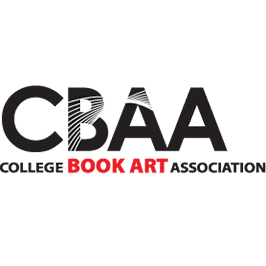These posts are an imaginative exercise, coming out of things I’m thinking about in my own work, and in conversations with other artists. (In particular with Bill Hanscom—I owe him a “thank you” for one of the prompts to write these posts.) I want to envision a studio practice, for a book artist, where aesthetic concerns, specific interests in content and concept, ethical/political concerns, and economic concerns can find perhaps not a perfect balance, but at least a stable ground for continued negotiation.
In 2005, while I was in graduate school, I made a 180 page image/text altered book called Art Into Life. It was very much in the spirit of the ur altered book, A Humument—each page hand drawn/painted/collaged, plus some digital printing done with a desktop laser printer. As I reflect on the books that I’ve made, there are two that feel like the most significant: that altered book and the ongoing, iterative The New Manifesto of the NewLights Press. One of those exists as editions of 250 over three iterations, and one of those exists as a single copy that has probably been read through by 35 people. Both books exist perpetually as digital facsimiles, and are theoretically available to be read at any time. Digital facsimiles seem like a good compromise between the logistics of keeping a book in (letterpress) print and/or the problems of attempting a straight facsimile of a unique book, but the “out of sight” availability of the digitally archived object remains very different from the availability of having the book in the home. The process of making that altered book, of composing page-by-page (like writing a book?) was extremely satisfying and the results felt quite different from the usual tightly planned and executed book productions that I’ve otherwise done. How can an artist get to that open-ended process without being stuck having to sell unique books to single collectors or institutions, also usually for less money than a single, large painting? Is a digital facsimile, 3-5 readers, and a day job enough?
It could be useful to think about the relationship(s) between comics and artists’ books. They are essentially the same material: text and image, in relation, in sequence. Yet they seem to exist in (mostly) separate worlds. I think that book artists can learn a great deal from comics—formal/structural things like how to deal with story and structure, timing, rhythm, etc., and also nuts and bolts things like how the work gets made, and how it makes its way out into the world.
The recent graphic novel, My Favorite Thing is Monsters, by Emil Ferris, is an incredible read, and I highly recommend it. It is also an interesting book to consider in terms of the relationship between artists’ books and comics. One of the conceits of the narrative is that the book itself is the journal/sketchbook of the main character, and as such it reproduces the look of a notebook. There are blue ruled lines on the pages, and the images and text are composed freely—there is little literal use of the panels that usually undergird the language of comics, though the idea of the panel is still very much embedded in the story-telling. It’s an intensely beautiful book—the reader can spend a great deal of time just looking and looking at the incredible drawings. The quality of the reproduction of those drawings is top-notch. It’s a long, dense book too, 386 pages. And it only costs $40.
Is a $40 copy of My Favorite Thing is Monsters a facsimile of an artist’s book? Or an original artist’s book? Or just a book? Where is the production and where is the reproduction? Does it even matter?
I am an artist that makes books by hand, I’ve been doing it for 18 years, and yet I’ve read a lot more comics than I have artists’ books. That could just be my reading habits, but it also probably has to do with the availability of comics. They are out there, published on the web, able to be ordered from the web, on the shelves of libraries, and often even in bookstores. (To be clear I’m not talking about standard “superhero comics” from the big publishers of such things. I’m talking about the weird, experimental, personal, literary, poetic, and/or journalistic comics of which there are many incredible examples.) Comics are labor-intensive to produce, and money-and-labor-intensive to reproduce and distribute—yet they are available, and they do make it into people’s homes, and they are read.
Aaron Cohick is the Printer of The Press at Colorado College and the proprietor of the NewLights Press. He lives and works in Colorado Springs, CO.

